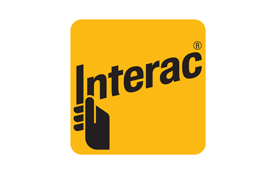slot machine in java
Java is a versatile programming language that can be used to create a wide variety of applications, including games. In this article, we will explore how to create a simple slot machine game using Java. This project will cover basic concepts such as random number generation, loops, and user interaction. Prerequisites Before diving into the code, ensure you have the following: Basic knowledge of Java programming. A Java Development Kit (JDK) installed on your machine. An Integrated Development Environment (IDE) such as Eclipse or IntelliJ IDEA.
- Starlight Betting LoungeShow more
- Cash King PalaceShow more
- Lucky Ace PalaceShow more
- Silver Fox SlotsShow more
- Golden Spin CasinoShow more
- Spin Palace CasinoShow more
- Diamond Crown CasinoShow more
- Royal Fortune GamingShow more
- Lucky Ace CasinoShow more
- Jackpot HavenShow more
Source
- slot machine in java
- slot machine game github
- how to get a hand pay on a slot machine
- used slot machines for sale
- slot machine 2.0 hackerrank solution java
- how to get a hand pay on a slot machine
slot machine in java
Java is a versatile programming language that can be used to create a wide variety of applications, including games. In this article, we will explore how to create a simple slot machine game using Java. This project will cover basic concepts such as random number generation, loops, and user interaction.
Prerequisites
Before diving into the code, ensure you have the following:
- Basic knowledge of Java programming.
- A Java Development Kit (JDK) installed on your machine.
- An Integrated Development Environment (IDE) such as Eclipse or IntelliJ IDEA.
Step 1: Setting Up the Project
Create a New Java Project:
- Open your IDE and create a new Java project.
- Name the project
SlotMachine.
Create a New Class:
- Inside the project, create a new Java class named
SlotMachine.
- Inside the project, create a new Java class named
Step 2: Defining the Slot Machine Class
The SlotMachine class will contain the main logic for our slot machine game. Here’s a basic structure:
public class SlotMachine {
// Constants for the slot machine
private static final int NUM_SLOTS = 3;
private static final String[] SYMBOLS = {"Cherry", "Lemon", "Orange", "Plum", "Bell", "Bar"};
// Main method to run the game
public static void main(String[] args) {
// Initialize the game
boolean playAgain = true;
while (playAgain) {
// Game logic goes here
playAgain = play();
}
}
// Method to handle the game logic
private static boolean play() {
// Generate random symbols for the slots
String[] result = new String[NUM_SLOTS];
for (int i = 0; i < NUM_SLOTS; i++) {
result[i] = SYMBOLS[(int) (Math.random() * SYMBOLS.length)];
}
// Display the result
System.out.println("Spinning...");
for (String symbol : result) {
System.out.print(symbol + " ");
}
System.out.println();
// Check for a win
if (result[0].equals(result[1]) && result[1].equals(result[2])) {
System.out.println("Jackpot! You win!");
} else {
System.out.println("Sorry, better luck next time.");
}
// Ask if the player wants to play again
return askToPlayAgain();
}
// Method to ask if the player wants to play again
private static boolean askToPlayAgain() {
System.out.print("Do you want to play again? (yes/no): ");
Scanner scanner = new Scanner(System.in);
String response = scanner.nextLine().toLowerCase();
return response.equals("yes");
}
}
Step 3: Understanding the Code
Constants:
NUM_SLOTS: Defines the number of slots in the machine.SYMBOLS: An array of possible symbols that can appear in the slots.
Main Method:
- The
mainmethod initializes the game and enters a loop that continues as long as the player wants to play again.
- The
Play Method:
- This method handles the core game logic:
- Generates random symbols for each slot.
- Displays the result.
- Checks if the player has won.
- Asks if the player wants to play again.
- This method handles the core game logic:
AskToPlayAgain Method:
- Prompts the player to decide if they want to play again and returns the result.
Step 4: Running the Game
Compile and Run:
- Compile the
SlotMachineclass in your IDE. - Run the program to start the slot machine game.
- Compile the
Gameplay:
- The game will display three symbols after each spin.
- If all three symbols match, the player wins.
- The player can choose to play again or exit the game.
Creating a slot machine in Java is a fun and educational project that introduces you to basic programming concepts such as loops, arrays, and user input. With this foundation, you can expand the game by adding more features, such as betting mechanics, different win conditions, or even a graphical user interface (GUI). Happy coding!
slot machine game github
In the world of online entertainment, slot machine games have always held a special place. With the rise of digital platforms, developers are increasingly turning to GitHub to share their creations, including slot machine games. This article will guide you through the process of finding, understanding, and utilizing slot machine game projects on GitHub.
Why Use GitHub for Slot Machine Games?
GitHub is a treasure trove for developers, offering a vast array of open-source projects. Here are some reasons why you might want to explore slot machine games on GitHub:
- Community Support: Access to a community of developers who can provide feedback, bug fixes, and enhancements.
- Learning Resource: Study and learn from existing codebases to improve your programming skills.
- Customization: Modify and customize the game to suit your needs or create something entirely new.
- Collaboration: Collaborate with other developers to build more complex and feature-rich games.
Finding Slot Machine Games on GitHub
To find slot machine games on GitHub, you can use the following methods:
- Search Bar: Use the GitHub search bar with keywords like “slot machine game,” “slot machine,” or “casino game.”
- Repositories: Browse through repositories that are tagged or described as related to casino games or slot machines.
- Forks and Stars: Look for repositories that have a high number of forks and stars, indicating their popularity and reliability.
Popular Slot Machine Game Repositories
Here are some popular slot machine game repositories on GitHub that you might find interesting:
- Slot Machine Game: A simple yet engaging slot machine game built using JavaScript and HTML5.
- Casino Game Suite: A collection of casino games, including slot machines, built with Python and Pygame.
- Slot Machine Simulator: A simulation of a slot machine game, perfect for learning and experimenting with game mechanics.
Understanding the Codebase
Once you’ve found a repository, it’s essential to understand the codebase. Here are some steps to help you get started:
- Read the README: Start by reading the README file, which usually contains instructions on how to set up and run the game.
- Explore the Code: Familiarize yourself with the code structure. Look for key components like game logic, graphics, and user interface.
- Run the Game: Follow the setup instructions to run the game on your local machine. This will help you understand how the game works in practice.
Customizing and Contributing
After understanding the codebase, you can start customizing the game or contributing to the project. Here are some ideas:
- Add New Features: Introduce new features like different slot themes, bonus rounds, or multiplayer modes.
- Improve Graphics: Enhance the visual appeal by adding new graphics, animations, or sound effects.
- Fix Bugs: Identify and fix any bugs or issues in the game.
- Optimize Performance: Improve the game’s performance by optimizing the code and reducing load times.
Exploring slot machine games on GitHub is a fantastic way to dive into the world of game development. Whether you’re looking to learn, customize, or contribute, GitHub offers a wealth of resources and opportunities. Start your journey today and create your own slot machine game or enhance an existing one!
By following this guide, you’ll be well on your way to mastering the art of slot machine game development on GitHub. Happy coding!
slot machine html
In the world of online entertainment, slot machines have always been a popular choice for players. Whether you’re looking to create a simple game for fun or want to dive into the world of web development, building a slot machine using HTML, CSS, and JavaScript is a great project. This article will guide you through the process of creating a basic slot machine that you can further customize and enhance.
Table of Contents
- Setting Up the HTML Structure
- Styling with CSS
- Adding Functionality with JavaScript
- Testing and Debugging
- Conclusion
Setting Up the HTML Structure
The first step in creating your slot machine is to set up the basic HTML structure. This will include the reels, buttons, and any other elements you want to display on the screen.
<!DOCTYPE html>
<html lang="en">
<head>
<meta charset="UTF-8">
<meta name="viewport" content="width=device-width, initial-scale=1.0">
<title>Simple Slot Machine</title>
<link rel="stylesheet" href="styles.css">
</head>
<body>
<div class="slot-machine">
<div class="reel" id="reel1"></div>
<div class="reel" id="reel2"></div>
<div class="reel" id="reel3"></div>
</div>
<button id="spin-button">Spin</button>
<script src="script.js"></script>
</body>
</html>
Key Elements:
- Slot Machine Container: The
divwith the classslot-machinewill hold the reels. - Reels: Each
divwith the classreelrepresents an individual reel. - Spin Button: The
buttonwith the idspin-buttonwill trigger the spinning action.
Styling with CSS
Next, we’ll style the slot machine using CSS. This will include setting the dimensions, colors, and positioning of the reels and buttons.
body {
display: flex;
justify-content: center;
align-items: center;
height: 100vh;
background-color: #f0f0f0;
font-family: Arial, sans-serif;
}
.slot-machine {
display: flex;
justify-content: space-around;
width: 300px;
height: 200px;
background-color: #333;
border-radius: 10px;
padding: 20px;
}
.reel {
width: 80px;
height: 100%;
background-color: #fff;
border: 2px solid #000;
display: flex;
flex-direction: column;
justify-content: space-around;
align-items: center;
font-size: 24px;
font-weight: bold;
}
#spin-button {
margin-top: 20px;
padding: 10px 20px;
font-size: 16px;
cursor: pointer;
}
Key Styles:
- Body: Centers the slot machine on the page.
- Slot Machine Container: Sets the width, height, and background color of the slot machine.
- Reels: Defines the size, background, and border of each reel.
- Spin Button: Styles the button for better visibility and interaction.
Adding Functionality with JavaScript
The final step is to add functionality to the slot machine using JavaScript. This will include the logic for spinning the reels and determining if the player has won.
const reels = document.querySelectorAll('.reel');
const spinButton = document.getElementById('spin-button');
const symbols = ['🍒', '🍋', '🍇', '🔔', '⭐', '💎'];
function spinReel(reel) {
reel.textContent = symbols[Math.floor(Math.random() * symbols.length)];
}
function spinAllReels() {
reels.forEach(spinReel);
}
spinButton.addEventListener('click', spinAllReels);
Key Functions:
- spinReel: Randomly selects a symbol from the
symbolsarray and assigns it to a reel. - spinAllReels: Calls
spinReelfor each reel to spin all at once. - Event Listener: Listens for a click on the spin button and triggers the
spinAllReelsfunction.
Testing and Debugging
After implementing the code, it’s crucial to test and debug your slot machine to ensure it works as expected. Open your HTML file in a browser and click the “Spin” button to see the reels in action. If any issues arise, use the browser’s developer tools to inspect and debug the code.
Creating a simple slot machine using HTML, CSS, and JavaScript is a fun and educational project. This basic setup can be expanded with additional features such as scoring, animations, and more complex game logic. Whether you’re a beginner or an experienced developer, building a slot machine is a great way to enhance your web development skills.
javascript slot machine code
Introduction###JavaScript Slot Machine CodeThe JavaScript slot machine code refers to a set of programming instructions written in JavaScript that simulate the functionality of a traditional slot machine. These codes can be used in various applications, including online casinos, mobile games, and desktop software. In this article, we will explore the concept, benefits, and implementation details of JavaScript slot machine code.
Benefits
The main advantages of using JavaScript slot machine code are:
• Flexibility: JavaScript allows for dynamic and interactive experiences on both web and mobile platforms. • Customizability: The code can be easily modified to fit specific game requirements, such as graphics, sounds, and rules. • Accessibility: Online casinos and gaming apps can reach a broader audience with user-friendly interfaces. • Cost-Effectiveness: Developing games using JavaScript slot machine code can be more cost-efficient compared to traditional methods.
Implementation Details
To implement JavaScript slot machine code, you’ll need:
- Basic understanding of JavaScript: Familiarize yourself with the language, including variables, data types, functions, loops, and conditional statements.
- Graphics and animation library: Utilize a library like Pixi.js or Phaser to create visually appealing graphics and animations for your game.
- Audio library: Choose an audio library such as Howler.js to add sound effects and music to enhance the gaming experience.
- Random Number Generator (RNG): Implement a reliable RNG to ensure fair and unpredictable outcomes for slot machine spins.
Code Structure
A basic structure for JavaScript slot machine code includes:
- Initialization: Set up game variables, graphics, and audio resources.
- Game Loop: Manage the main game logic, including user input, calculations, and updates.
- Slot Machine Logic: Handle spin button clicks, random number generation, and outcome calculation.
- User Interface (UI): Create a visually appealing UI to display game information, such as balance, bet amount, and winning combinations.
Example Code
Here’s an example of basic JavaScript slot machine code:
// Initialization
let balance = 100;
let betAmount = 1;
// Graphics and animation library (Pixi.js)
let app = new PIXI.Application({
width: 800,
height: 600,
});
document.body.appendChild(app.view);
// Audio library (Howler.js)
let soundEffect = new Howl({
src: ['sound.mp3'],
});
// Random Number Generator (RNG)
function getRandomNumber(min, max) {
return Math.floor(Math.random() * (max - min + 1)) + min;
}
// Slot Machine Logic
function spinSlotMachine() {
let outcome = getRandomNumber(0, 10);
if (outcome > 7) {
// Winning combination
balance += betAmount;
soundEffect.play();
} else {
// Losing combination
balance -= betAmount;
}
}
// User Interface (UI)
function updateUI() {
document.getElementById('balance').innerHTML = balance.toFixed(2);
}
This code example provides a basic structure for a JavaScript slot machine game. You can extend and customize it to fit your specific needs.
Conclusion
JavaScript slot machine code offers flexibility, customizability, accessibility, and cost-effectiveness in developing online casinos and gaming apps. By understanding the implementation details, code structure, and example code, you can create engaging and interactive experiences for players.
Frequently Questions
How to Implement a Slot Machine Algorithm in Java?
To implement a slot machine algorithm in Java, start by defining the symbols and their probabilities. Use a random number generator to select symbols for each reel. Create a method to check if the selected symbols form a winning combination. Implement a loop to simulate spinning the reels and display the results. Ensure to handle betting, credits, and payouts within the algorithm. Use object-oriented principles to structure your code, such as creating classes for the slot machine, reels, and symbols. This approach ensures a clear, modular, and maintainable implementation of a slot machine in Java.
What is the Best Way to Implement a Slot Machine in Java?
Implementing a slot machine in Java involves creating classes for the machine, reels, and symbols. Start by defining a `SlotMachine` class with methods for spinning and checking results. Use a `Reel` class to manage symbols and their positions. Create a `Symbol` class to represent each symbol on the reel. Utilize Java's `Random` class for generating random spins. Ensure each spin method updates the reel positions and checks for winning combinations. Implement a user interface for input and output, possibly using Java Swing for a graphical interface. This structured approach ensures a clear, maintainable, and functional slot machine game in Java.
What is the Java Solution for the Slot Machine 2.0 Challenge on HackerRank?
The Java solution for the Slot Machine 2.0 Challenge on HackerRank involves simulating a slot machine game. The program reads input values representing the slot machine's reels and their symbols. It then calculates the total score based on the symbols aligned in each spin. The solution typically uses nested loops to iterate through the reels and determine the score by comparing adjacent symbols. Efficient handling of input and output is crucial for performance. The final output is the total score after all spins, formatted according to the challenge's requirements.
What are the best GitHub repositories for developing an Android slot machine app?
For developing an Android slot machine app, explore GitHub repositories like 'SlotMachine' by mitchtabian, which offers a comprehensive guide using Kotlin and Android Studio. Another excellent resource is 'Android-Slot-Machine' by johncodeos, featuring clean code and detailed documentation. Additionally, 'SlotMachineGame' by bhavin3029 provides a simple yet effective implementation in Java. These repositories offer valuable insights, code samples, and best practices, making them ideal for both beginners and experienced developers looking to create engaging slot machine apps on Android.
What are the steps to create a basic slot machine game in Java?
Creating a basic slot machine game in Java involves several steps. First, set up the game structure with classes for the slot machine, reels, and symbols. Define the symbols and their values. Implement a method to spin the reels and generate random symbols. Create a method to check the result of the spin and calculate the winnings. Display the results to the user. Handle user input for betting and spinning. Finally, manage the game loop to allow continuous play until the user decides to quit. By following these steps, you can build a functional and engaging slot machine game in Java.




















